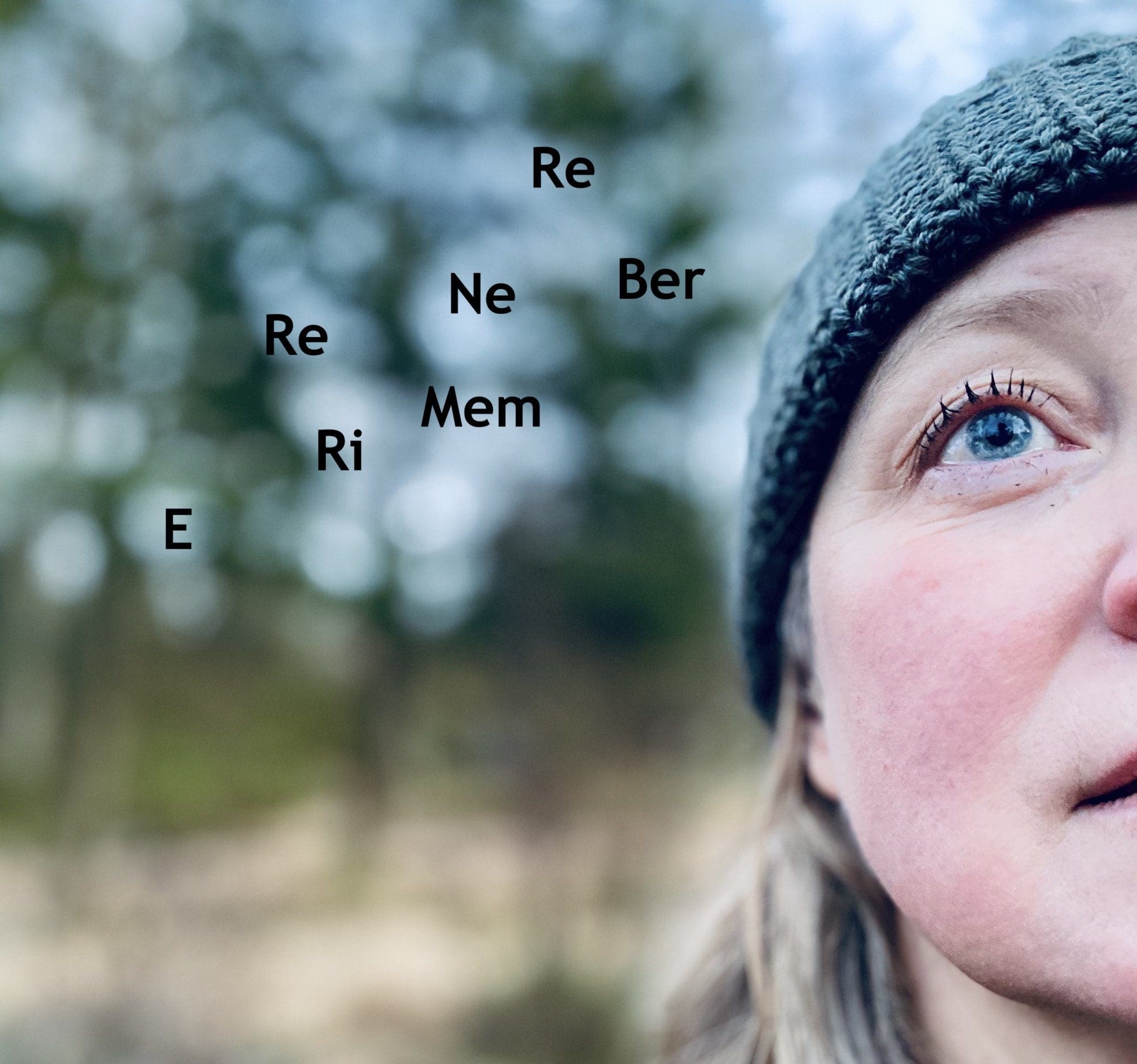Lili Marleen-effekten
Imagine the sound of the 1940-ies. In short snapshots. The song Lili Marleen is famous for being unstoppable in crossing borders between countries and languages in a time when the rule was to separate cultures and races.
I am using inspiration from – and sound particles of – Lili Marleen to compose an a capella song cycle dedicated to a WW2 war child – the unwanted child of a Norwegian mother and a German soldier father.
With support from Komponistenes Vederlagsfond and TONO, these scores will be in progress in 2024. An earlier piece made from the material, “My Mother Said” (score video below), was premiered by Neue Vocalsolisten Stuttgart in Grieghallen, Bergen 2019. In the research for that, I found a lot of material, so I am now working towards a song cycle for vocal ensemble (SSAA – also suitable for advanced-level choirs). In 2022, the organisation Voxlab in Oslo invited me to workshop the material with them, a pre-project named “Erinnere/Remember”.
The project is dedicated to my late mother-in-law Ann Brit Houeland (1943-2022), who is the actual mentioned war child. She was born in Bergen, Norway during the German occupation of Norway. It was a big stigma, so she was immediately given up for adoption. That didn’t go very well at first, she was sent as a parcel back and forth between homes and families in Germany and Norway for several years, including Lebensborn facilities. As a 4 year-old, she was finally adopted for good by a Norwegian-American family in Brooklyn, and travelled to the US. Then the dust settled and she forgot everything, including that she ever spoke German, and did not hear about these events again until she reached middle age.

In the song cycle I try to combine the imagined perspectives of the small child and the same person as a grownup. The small child who is rejected for the fact that she exists, and who is mix of opposing cultures, and the grownup who has forgotten, but at some level sense she is an “imposter”, and experience flashbacks. I use small language sounds, and fragments of words, plus fragments of Lili Marleen and other songs from Norwegian, English and German. My own imagination fills the many holes in the story, since by 2019, when I started my project, the Norwegian mother and German soldier father were long gone. Also when they were alive, that generation did not speak of the events. The generation after, in contrast, spoke quite freely about it, but the inner aspects of it are not easy to convey, and they too are mostly gone now. So this work has an archeology aspect to it, where I interpret and associate quite freely around the remaining “artifacts”.
Ann Brit’s forgotten past must have still been there in the subconscious and the body memory, but erased from the conscious mind. She had a sunny and loving personality, since I got to know her in the early 2000s. By then she had just reconnected with the Norwegian part of her biological family.
The particles of sounds that I use from the three languages, Norwegian, German and English, are collected from snippets of text from her official case documents and other places. I am deconstructing words into syllables and syllables into sounds, notating with phonetic notation. It is an archeology, not just of historic events, but also of sound and consciousness. Composed together in different ways and from different angles, I intend the fragments to portray some of the inherent contradictions in the war child, with repressed memories, unspeakable events, language formation, translation insufficiencies, pidgin language and words that disappear and reappear from consciousness. My process is also an investigation into remembering and forgetting, inspired by how music can make people remember the forgotten and connect different parts of the brain or layers of the human consciousness.
The phenomenon of Lili Marleen is a very interesting one. It is a good example of “things that connect” in a reality where authorities want separation. Song and language both hold special positions when it comes to the human consciousness and the grey areas in-between the black or white side-taking. For instance the common roots of the Norwegian, English and German languages become clearer when the words are deconstructed and morph into each other.
As for future performance of the songs: In line with the idea of connecting, it would make sense to somehow use these songs to connect vocal ensembles from the three language areas, with focus on younger performers.